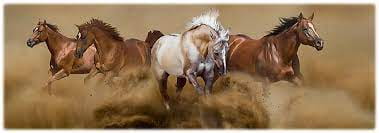Unit 1: Supervised Agricultural Experience Program (SAEP) in Livestock Production
Students will continually work on a SAEP throughout this course. The program is aimed to help prepare additional opportunities to learn, reinforce, apply, and transfer their knowledge and skills in a real-world setting. Students will plan, propose, conduct, document and evaluate a SAEP pertaining to either entrepreneurship, placement, exploration, research (either experimental or analytical), improvement, supplemental or other identified topic as an experiential learning activity.
Unit 2: Community Service and Leadership Development
During this unit, students will learn more about the qualities and characteristics required to be successful in business and industry. While a basic understanding and development of employability skills will help students obtain employment, they will learn that developing leadership skills will aid them in job retention and potential promotion opportunities. As a part of their Supervised Agriculture Experience Program (SAEP) students will participate in youth leadership opportunities, such as FFA, and implement/participate in local activities in their community.
Unit 3: Introduction to Small Animal Management
Students will understand the history of domestication and use of small animals, identify the influence small animals have on society, and describe the importance of the small animal industry and benefits of small animal ownership. Students will explain the uses for small animals other than for companion animals. Students will interpret supply and demand pertaining to the small animal industry in the United States.
Unit 4: Small Animals
Students will differentiate between three classes of animal domesticates: commensals, prey animals sought for food, and targeted animals for draft and nonfood resources. Students will identify the different species and breeds of small animals, and be able to discuss and describe their physical characteristics.
Unit 5: Industry Regulations, Compliance, and Workplace Safety
This unit will expose students to the important compliance, safety standards, and regulations that are implemented within this industry. Students will identify and recognize the hazards associated with working in the small animal industry by explaining the importance of safe practices when working with small animals. Students will understand the role of risk management in the small animal industry, and why certain regulations and safe practices are in place to protect both the small animal and the caregiver/handler.
Unit 6: Animal Rights and Welfare
Students will distinguish between the concept of animal rights and the concept of animal welfare. Students will research important persons, organizations, groups, legislation, and events involved in the animal rights movement. This unit contains lessons on recognizing early warning signs of animal distress and how to rectify the problem; federal and state animal welfare laws and regulations, and humane transport and harvest regulations.
Unit 7: Basic Care of Small Animals
Students will understand that livestock need shelter, water, feed and, sometimes to survive and meet their basic needs but they often need other care to be viable. Students will learn the proper handling procedures of small animals; too much restraint can cause the animal to fight back, too little restraint can result in the handler or others being injured or in the animal escaping. Students will demonstrate basic grooming and common diagnostic procedures, including fecal and blood testing.
Unit 8: Small Animal Pests and Disease
Students will participate in lessons on recognizing health vs. illness, disease causing pathogens, vectors and hosts, prevention, control and treatment practices, parasites, quality assurances in medications and disease transmission. Students will understand the hazards associated with working in the small animal industry by explaining the importance of safe practices when working with small animals, identifying diseases that can be transmitted from small animals to humans, and describing methods of preventing the spread of diseases.
Unit 9: Career Development
Students will identify interests, abilities, aptitudes, values, and personality traits as they relate to career planning, to develop a keen understanding of the value and benefit of work, and to differentiate between jobs and careers. This unit will help students better understand the various career opportunities within the small animal industry. Students will develop a career plan designed to achieve their career goals within this industry.
Unit 10: Professional Development
Students will demonstrate the importance of positive work ethics and soft skills in relation to educational and career success including, but not limited to, appearance, attendance, attitude, character, communication, cooperation, organizational skills, productivity, respect, honesty, motivation, creativity, leadership, critical thinking, risk-taking, flexibility, questioning, and problem-solving, and teamwork. Students will understand the professional ethics legal responsibilities pertaining to the small animal industry.
